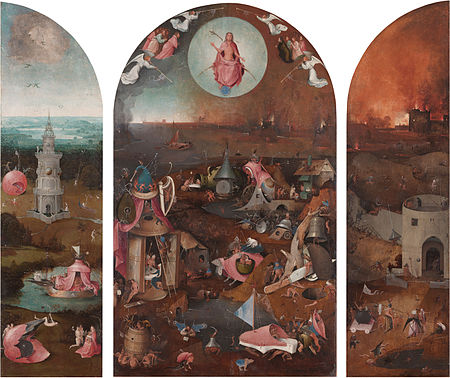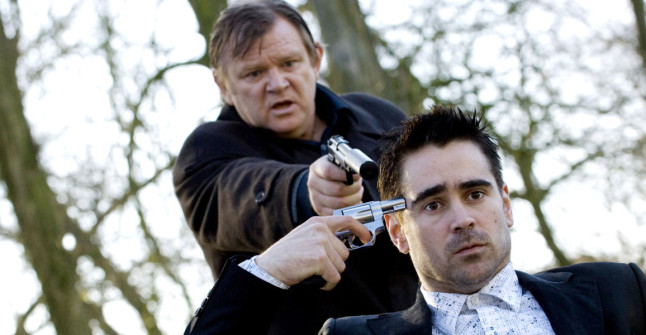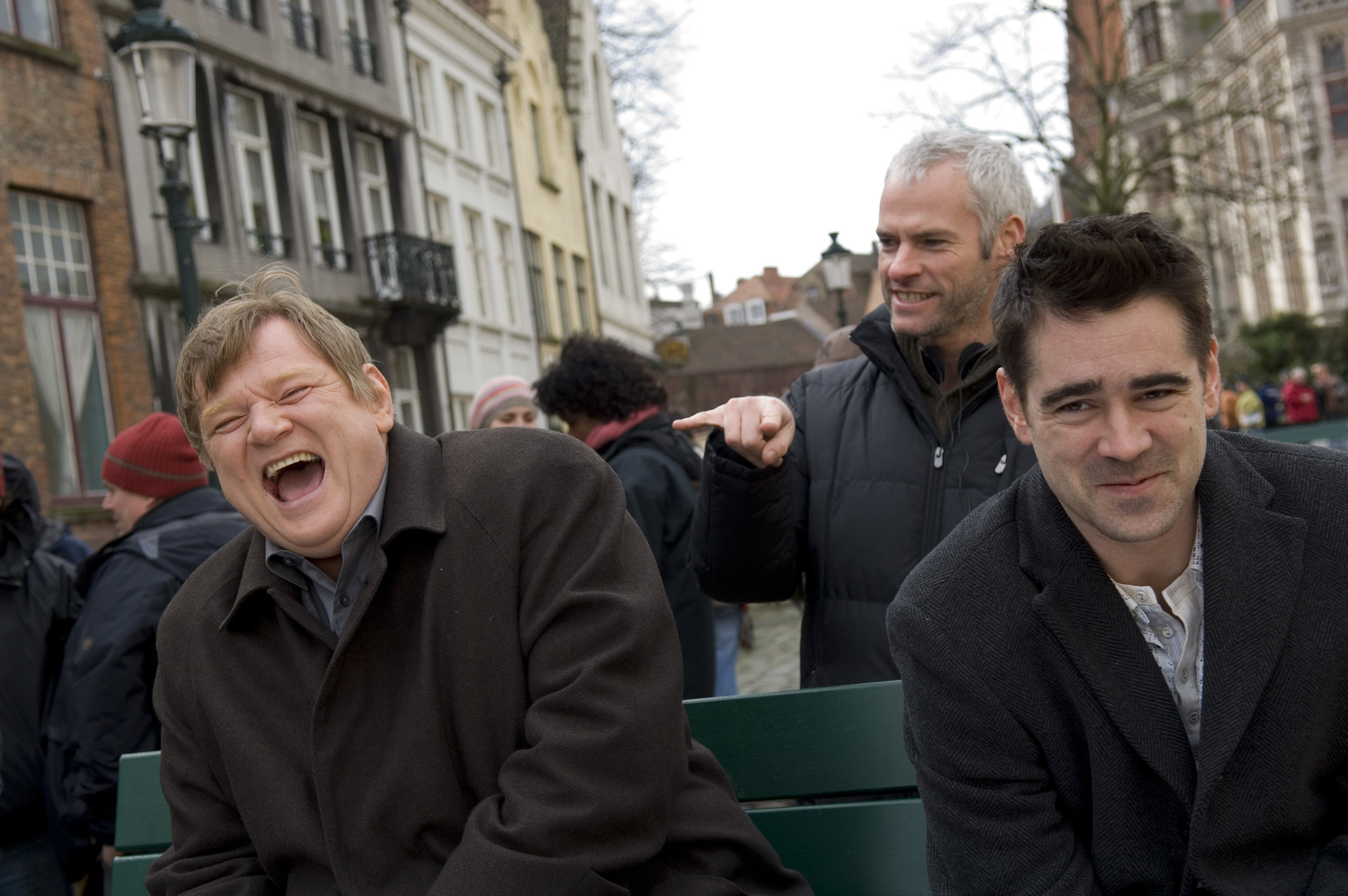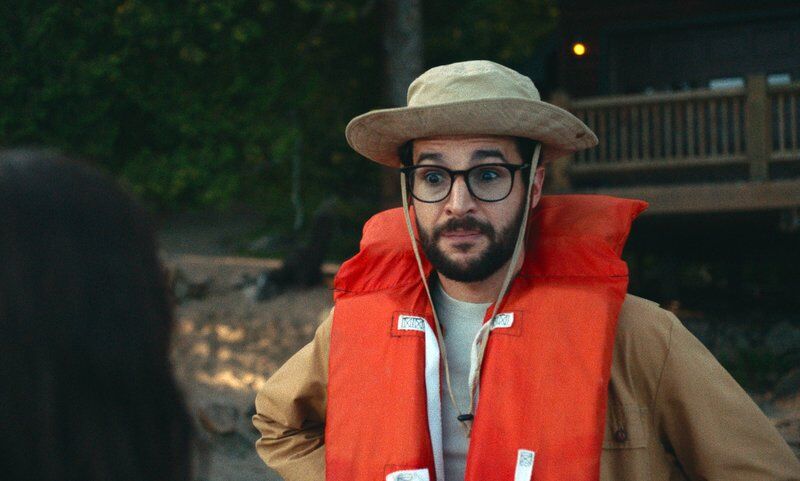The perfect movie doesn’t exis…. oh. In Bruges. Yeah. I literally just rated a movie a solid 5/5 – and that is just something I do not do here at THiNC. Everyone has room to grow. There are always flaws, and glitches that could be perfected. But last night, I think I might have just watched an example of a perfect film. And this is all due to CY, our intrepid editor, forcing me awake… “You must stop reviewing these silly-teen-boy movies and start watching something brilliant!” (OK, she is much too nice to say anything like that. But, she SHOULD have. So, today, I have just made your weekend infinitely better. IF YOU’D JUST TRUST ME FOR ONCE! Gah. OK, let’s do this: Explaining How In Bruges is Literally Perfect!!
In Bruges tells the story of a guilt-stricken hit-man after a hit goes desperately wrong and ends up killing a little boy. In the aftermath of that mistake, Ray and his partner await orders in Bruges from their horrible mob boss. Oh, and in Bruges is the absolutely last place that Ray wants to be. A dark comedy/moralist adventure with twists and turns to keep even our intrepid surprise expert Lisa enthralled. Did I mention the movie is perfect yet? There isn’t a stitch of dialog wasted. There isn’t a scene, a character, a detail that doesn’t dovetail back on itself as this film investigates the idea of sin, forgiveness, moral ambiguity, and all while being brought to us by two hit-men. Yeah. I know. Brilliant.
OK, now go watch it would you? Rent it on Prime, iTunes, or Vudu. But hurry up would you. Because I don’t want you to go any further down this post without having seen it. Trust me, you really really do not want to spoil this particular movie.
In Bruges Walkthrough
Ray (played by Colin Farrell, a perennial favorite here at THiNC. – he has basically kept the site solvent with his Killing of a Sacred Deer, and Lobster) – a first time, rookie hit-man – kills a priest while in confession. But, he accidentally murders a young boy who happened to be standing in the wrong place at the wrong time. Afterwards, Ken (Brendan Gleeson) and Ray are sent to Bruges to await orders. Ray disdains the place, and Ken loves everything about it. While out and about, they take in an art museum, which Ray hates… but takes a liking to a Hieronymus Bosch painting. Here… I’ll show you.

The painting is titled, The Last Judgement, and the moment I saw it I knew that Bosch’s painting would be a significant detail that would be worth discussing. I mean, Ray and Ken are hit-men…contemplating a painting that I knew to be entitled The Last Judgment! hahah. If you look closely, you can see that in the center is Christ, standing in judgement. (He’s the one in the circle at the top of the middle triptych. And He’s surrounded by angels that are heralding in the last judgement from Revelation. And below? Is the final judgement indicated by the title. On the right is torment, and on the left is paradise, where those that are saved are being ferried across to Eden. Replete with pink tents, et al. The tower represents eternal youth…which, if you want more of, you can find a more detailed version of in Bosch’s Garden of Delights. And the lower middle triptych you see demons that look more like insects than anything else. We watch as fire overtakes the infernal city on the right, all being brought down by demons. And there in the background are the fires of hell. Huh. Gee. Maybe this might be just a little relevant? Nah.
Glad we got that annoying irrelevance out of the way. Later on, Ray stumbles upon a movie shoot, where he meets a pompous midget (dwarf? height challenged human?) actor, and a woman working on the set whom he is instantly attracted to, Chloe (played by Clémence Poésy). The next day Ray goes to dinner with her, but the dinner devolves into Ray attacking a Canadian couple he mistakes as Americans. (But they really did deserve it… didn’t they? But whatever.) And the big detail here is that while they are back at Chloe’s place her ex-boyfriend attacks Ray. Ray, disarms him, and after a discussion about the blanks that are in the gun, Ray shoots him in the face, which blinds him in one eye. That is when Ray finds out that Chloe and her ex are robbers, and that Chloe would bring men back to her apartment and then they would rob them. But! She promises he wasn’t a mark. When Ray steals a pile of drugs from Chloe’s apartment, he and Ken have a crazy drug-fueled binge with the midget and two prostitutes. (That might be the weirdest sentence I’ve ever typed.)
The next day, Harry (played by Ralph Fiennes), calls Ken and tells him to kill Ray. Uh, wut? Well, apparently, even among the mob, killing a boy is unforgivable. It’s the one absolute and complete sin. And he must pay for his crimes against humanity. He must die. Huh. I didn’t know mafia boss’s even had a moral code of ethics handbook to even play from. Well, here’s rule number one apparently…don’t accidentally, or otherwise, kill children. But it’s clear that Ray knows he’s royally screwed up and he cannot live with himself. Which, is interesting, because while Ken is out getting a handgun, Ray takes the gun he stole from Chloe’s boyfriend, and plans to kill himself while sitting at a local park. A park…obviously thinking about how the boy will not be able to play ever again.
But check this out – Ken, walking up on Ray from behind. (This is like straight out of a philosophy 101 class.) Pulls out his gun, releases the safety, and begins to point it at Ray’s head. But simultaneously, Ray pulls out his gun and points it at his own head. Uh. Okay. Huh. And just like that, Ken flips a switch and intercedes to keep Ray from killing himself. Wait, WHAT? Yeah. It’s that quick moment – the instantaneous judgement call that makes this the perfect movie that it is. Well, that and how that quick thinking decision plays out throughout the rest of the movie.

Immediately after this moment – Ken realizes that Ray is going to have to run for it. And so Ken gives Ray some money, puts him on a train and tells him to just keep moving. Don’t look back. Go, learn a language, you can do anything. YOU CAN DO ANYTHING! Such an important moment. Ken is about to walk back to Bruges, tell his boss to sod off, and prepare to die. But at this moment, he is giving Ray a pep-talk, encouraging him to the embrace the good inside him. Ken then, sitting at a pub in the square in town, awaits Harry’s arrival after his announcement that he will not be killing Ray. And show Harry does…he is beyond apoplectic. (Is there a verb beyond apoplectic? Can’t think of one. Let’s go with cataclysmically apoplectic?)
The two sit, drinking a beer, and worrying about the physicality of what is about to happen. The administrative details. You know, all the people standing around. The guns are loud. How? But Ken comes up with a plan – let’s go to the top of the bell tower, he says. (The Belfry Tower – and having walked all 366 stairs to the top, it’s quite the location for a final showdown.) And when they arrive at the top, Ken puts his gun down and tells Harry that he isn’t going to fight him. He’s going to just have to kill him. Ray was suicidal – he couldn’t kill him. It was a moral impossibility. But Harry, indignant at Ken’s refusal to put up a fight, shoots him in the leg instead of killing him.
Cut to – the train where Ray is making his low speed escape. A few minutes into his departure, a cop asks him his name, and asks if he hit a Canadian couple. And just like that, he’s hauled back to Bruges in order to be brought up on charges. (Can I just say that Martin McDonagh eye for crafting a ridiculously tight script is second to none. I was wondering how Ray would be hauled back (it is titled “In Bruges” after all). I’ve definitely got to work through McDonagh’s oeuvre from start to finish.) Chloe comes to the station and bails Ray out – he’s to be in court in the next couple days – but he’s free. And after that, they decide to have a beer at the base of the Belfry of all places. Because, of course. When Chloe’s boyfriend happens to see the two of them cavorting without a care in the world, he goes and tells Harry, who is currently at the top of the bell tower attempting to get Ken down. As soon as Ken hears that Ray is back in town, and that Harry now knows where he is, struggles with Harry to keep him from killing Ray. But Harry shoots Ken in the neck, and heads down the stairs. Ken, knowing what he has to do now, crawls back to the top, and readies himself to shoot Harry via the window.
But fog and clouds have rolled in since he began his ascent. Deciding he needs to jump to A) grab the attention of the people, B) warn Ray that he’s about to die too if he isn’t careful. Surprisingly, Ken survives the fall for a minute (which was fairly ghastly! I’m still having nightmares of that couple jumping of that cliff in Midsommer, bah.), just long enough to try and give him his gun. Which, of course, is broken. And like that, Harry and Ray are racing. Eventually Ray gets away in order to go back to the hotel to see if he can find the gun he stole the other day. But then Marie is trapped between the two men who, no matter how determined they are not to involve her, she won’t have any of it. So Ray says he’ll jump out the window, into the canal, and if he can get away he wins, but if he can’t…you get the idea. In a stroke of luck, (or not? now that I think about it) a barge is powering through just as he jumps. (I have had the extreme pleasure of taking several barge tours in this area of the world and I just have to pause this movie review to say – you have got to try one out if the opportunity ever arises. Trust me on this one. My favorite being a barge tour of Amsterdam after touring the Heineken factory – free beer, gorgeous scenery, watery floating? What is there not to love?) He lands on the back – but Harry, even at distance, is able to shoot him through the gut. Ray stumbles off the barge and half haphazardly stumbles his way onto the movie shooting set as he is surrounded by sights straight out of the Bosch painting.
When Harry catches up to him, he is so hellbent on killing Ray he doesn’t care he’s surrounded by witnesses, demons, maids, cows, movie directors, and the like. But when Harry shoots Ray, he hits him in the back, and bullet travels through him, and into the face of the dwarf dressed as a young boy. Now, I must say, that earlier in the movie, Harry told Ken that if he had accidentally killed a boy, he’d kill himself then and there. And, true to his word, Harry puts the gun in his mouth, and pulls the trigger. The End. (Oh there are a few frantic cut scenes of the paramedics and Chloe frantically trying to save Ray. But for all intents and purposes, The End.
In Bruges Movie Explained
The very first thing you have to know about Martin McDonagh is that he’s a moralist. Not certain if this statement is a popular public opinion or not. But it might just be the most obvious thing I’ve said today…and I told my family it was raining outside, as they were all looking out the window. Yeah. And yet, I don’t think there is a lot out there talking about this detail. In fact, as I flipped through his body of work it feels as if they are filled with really terrible characters, and they usually win the day? I don’t know. But I do know, all the same, McDonagh is a serious moralist. He has an enormously strong moral compass.
In Bruges is such a moralist’s tale that it is actually a Morality Tale. Come on, you remember freshman lit. class – “a morality tale is a story or narrative from which one can derive a moral about right and wrong.” (Thank you Merriam). And this particular story resides 100% in the land of purgatory. – Double Take – “pardon me. what?” It’s okay, I’m sure 99% of people that watch this movie don’t get this bit. But it’s really really apparent as soon as you take your face out of your popcorn bucket for 12 seconds. Look, think about it – the movie starts in Bruges. Zero context. Zero backstory (a word which McDonagh hates – just for the record.) We appear here… in Bruges – absent any idea as to how we got here. But we learn that Ray murdered a Priest, and a boy… and voila, Bruges. But if you were to watch this movie over again and substitute Purgatory every single time that you hear the word Bruges, it might help you grasp what is really going on here. And what is purgatory? I am not 100% certain, as I’m not Catholic, and don’t believe in purgatory… but, delving into the world wide web, it assures me that it is a place of holding, a place of suffering, where souls of sinners are held in order to expiate their sins before going to heaven. (And here’s the crux of why I don’t believe in purgatory – Christ died on the cross to expiate our sins once and for all). (Expiate is just a clever theological term that means atone for – to pay for. And you guys thought I write about movies in order to talk about movies…I talk about movies to trick you into listening someone talk about theology! hahahah. And you think I’m kidding right now. So great.)
Here, let me put in a way that might make more sense. RAY IS STUCK IN BRUGES! He can’t get out. He is suffering in Bruges. Pretty much every other conversation between Ray and Ken is about this little boy that Ray has recently killed. He is in pain. He is suffering. He is on the cusp of hell. And yet, Ken sees heaven in him. Right? “What? No. How?” Oh my gosh. You guys are impossible. Remember when Ken is talking to Harry and he says, I can’t kill him, he’s suicidal. He can change! And Harry responds with – I can change. And Ken goes, yeah, into something worse, something more evil. (I left out the swearing. But you get the idea.) But Ray? He can be good. He can change. He can be forgiven. They are talking about Ray’s chance at heaven. Harry and Ken are going to hell. That is a done deal. Their door to heaven has been closed. (I don’t believe that either, the man on the cross next to Jesus was terminal – had lived a life of sin, maybe – and yet that same day he was with Christ in heaven. Sorry sorry! No more theology, I promise.) But Ray?? Ken believes so strongly that he has a chance at change, to live a life that makes a difference, that he dies for him. (Yes, Ken is our Christ figure. (And you thought I was serious that I’d stop talking about theology. Sucker.) Literally throws himself off the bell tower in order to save his life. Brilliant.
Now are you grokking this particular movie? We are watching a 90-minute decision be made. Ray? Are you going stop, repent of your wrong, and go in the opposite direction? Or are you going to blissfully head onwards towards the fiery flames on the right side of that Bosch painting? Which way is it going to be?
And that is why this movie is a perfect ninety minutes of celluloid. Can’t wait to watch it again. It was funny, it had action, it had fantastic twists and turns. And it had a drug fueled midget party to boot. As far as theological conversations go – you cannot beat that with a stick.
Edited by: CY



